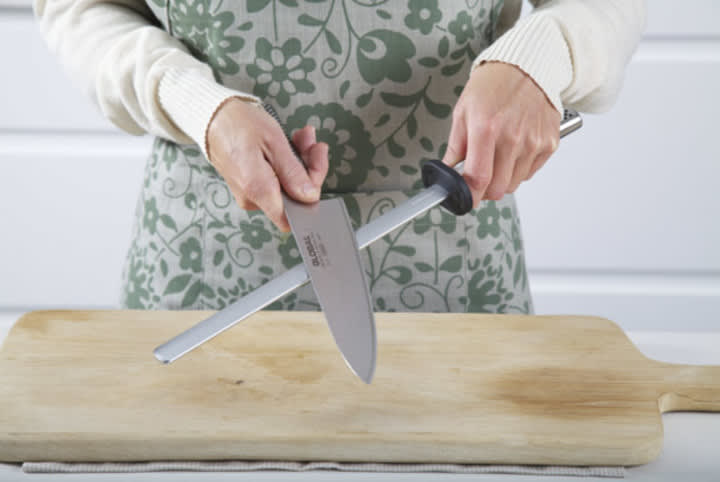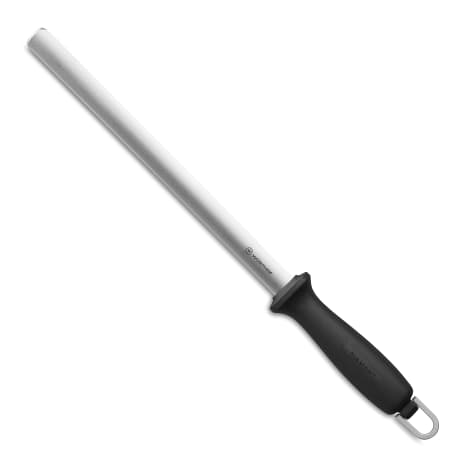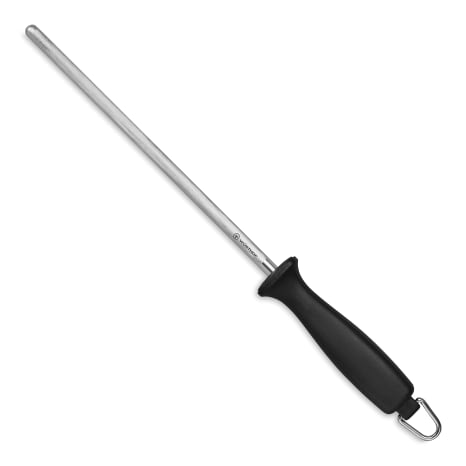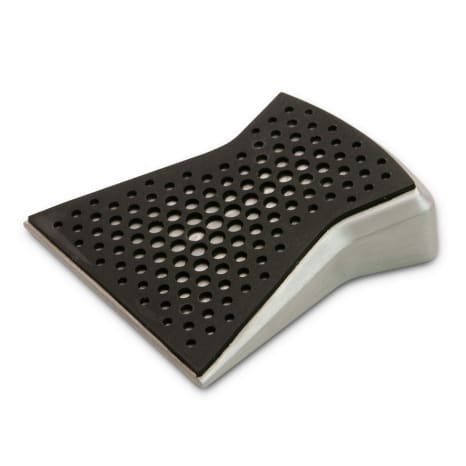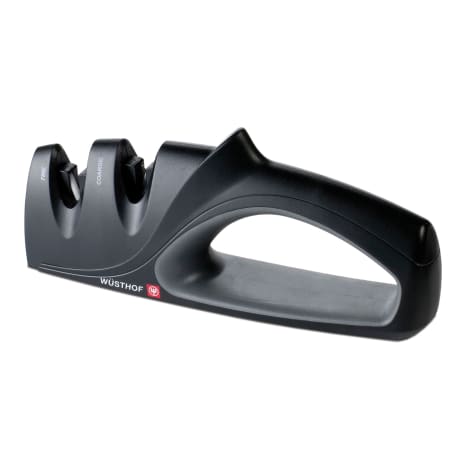–Essential tips for cutting brilliance 🔪Keeping your knives sharp
All knives need sharpening and maintenance to keep their cutting brilliance. Sharpening might seem a bit tricky at first, but once you get the hang of it and understand your knives, it becomes a simple routine. A dull knife is riskier than a sharp one, so keep ‘em sharp and safe!
The best way to think about it is this — if you keep if your knives sharp with regular honing and maintenance, using a steel, you'll only need to give them a more intensive sharpening once in a while.
–Different tools for sharpening & maintaining your knives
–1. Sharpening and honing steels
As you keep slicing and dicing, the micro edge of your knife becomes jagged, making it dull. Picture it under a microscope, and you’d spot an uneven, wavy edge. But fear not — a sharpening steel is the easiest trick to restore and keep your blade in tip-top shape for more smooth-cutting.
The three most common materials for knife steels
Steels all serve the purpose of maintaining your knife's edge or restoring it's sharpness. The key difference in what they'll achieve, is their material. They range from less coarse or abrasive to more coarse.
- Metal honing steels are the least intense — they're ideal for using often, before or after every use, think of them as keeping the edge sharp rather than brining a blunt knife back to sharpness. They won't remove much material from your knife's edge.
- Ceramic steels are a step up — they have a medium coarseness and will realign the edge and remove a little more material when you sharpen your knife. More abrasive than metal steels but still gentle enough for regular maintenance without excessive wear.
- Diamond steels are the most intensive — they feature a steel core coated with industrial diamond particles. Used for sharpening rather than honing, diamond steels remove metal to create a new edge.
Most popular Honing & Sharpening Steels
Sharpening Steel
- Typically made of ceramic or steel with a diamond coating
- Effectively sharpens and realigns the knife's edge
- Removes a considerable amount of metal to create a sharper edge
- Used less frequently than honing
- Suitable for regular knife maintenance
Honing Steel
- Typically made of high-carbon steel, sometimes coated with chrome or other alloys for durability
- Pushes any irregularities in the blade straight without removing metal (at most very minuscule amounts)
- Used more frequently than sharpening
- Suitable for using before or after each knife use
–2. Whetstones
A whetstone is used for comprehensive sharpening and reshaping of the blade by removing worn-out metal and refining the edge. It can be natural or synthetic and has different grit levels. Using a whetstone requires some skill and practice as you need to grind the blade on the stone.
Key features:
- Used for sharpening knives by removing metal and refining the edge
- Made of natural or synthetic stone with various grit levels
- Requires more skill; involves grinding the blade against the stone
- Used periodically to reshape and sharpen the blade
Strengths:
- Provides precise control over the sharpening process
- Offers various grit levels for different stages of sharpening
- Ideal for maintaining high-quality and delicate knives
Considerations:
- Requires skill and practice to use effectively
- Takes more time compared to other sharpening methods
- Regular maintenance is necessary for optimal results
Most Popular Whetstones
–3. Pull-through sharpeners
These sharpeners keep it simple and hassle-free and they require the least amount of skill, making it easy to keep your knives sharp with minimal effort. The design guides the knife through preset slots, for a quick and easy sharpening experience. But there is a risk that it could damage the knife's edge if over-used.
Key features:
- Convenient tool for quick and easy knife sharpening
- Typically consists of two slots with preset angles for sharpening
- Pull the knife through the slots to sharpen the blade
- Usually features carbide or ceramic sharpening elements
Strengths:
- Quick and user-friendly
- Requires minimal skill
- Suitable for regular maintenance
Considerations:
- Might wear down your knife faster
- The preset angles may not work well for all knives, affecting their sharpness
- Not as precise as manual methods like sharpening steels or whetstones
